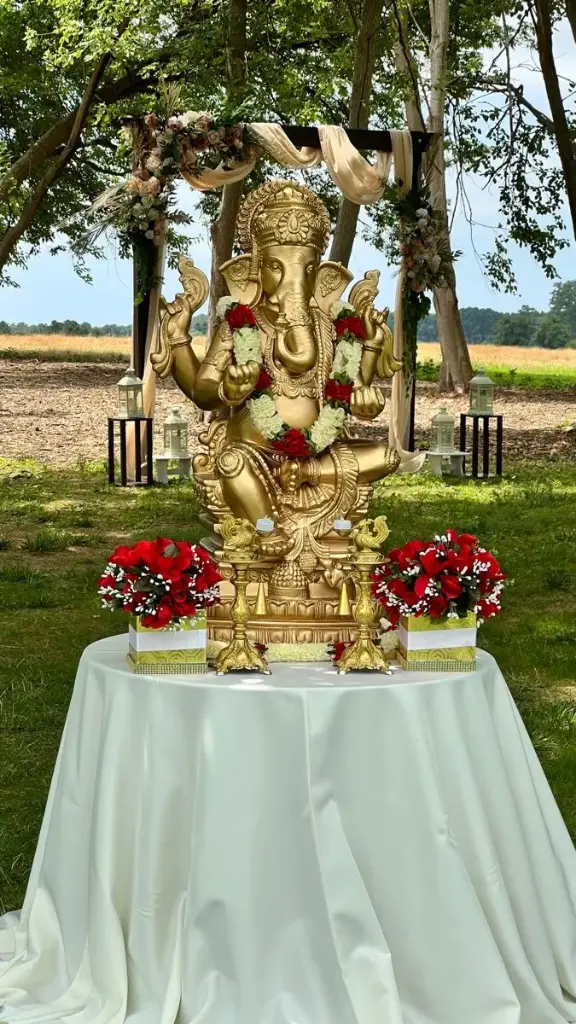Ganesh Murti
A Ganesh murti, or idol of Lord Ganesha, is a representation of the Hindu deity known as the remover of obstacles and the god of beginnings. It typically features an elephant head, a large belly, and four arms, each holding symbolic objects. The idol's appearance and attributes carry deep symbolic meaning in Hinduism.
Key Features and Symbolism:
- Elephant Head:Symbolizes wisdom, intellect, and the ability to overcome obstacles, as elephants are known for their intelligence and strength.
- Large Belly:Represents abundance, prosperity, and the ability to digest both good and bad experiences in life.
- Four Arms:Signify Ganesha's omnipresence, power, and ability to handle multiple tasks.
- Specific Objects in Hands:Often include a modak (sweet), a noose, an axe, and a lotus flower, each with its own symbolic meaning.
- Posture:Frequently depicted in a seated position, signifying stability and groundedness.
- Right Hand in Abhaya Mudra:The gesture of blessing and protection, dispelling fear.
- Broken Tusk:A common feature, representing Ganesha's vow to write the Mahabharata,
Cultural Significance:
- Worshipped Before All Undertakings:Ganesh is revered at the beginning of any new venture, as he is believed to remove obstacles and bring good fortune.
- Patron of Arts and Sciences:Ganesha is considered the patron of scholars, financiers, authors, and artists.
- Symbol of Protection:Believed to ward off negative energies and protect homes and families.
- Diverse Depictions:Ganesh idols are crafted from various materials like wood, marble, or brass, and can be found in different sizes and postures, each with its own unique aesthetic.
